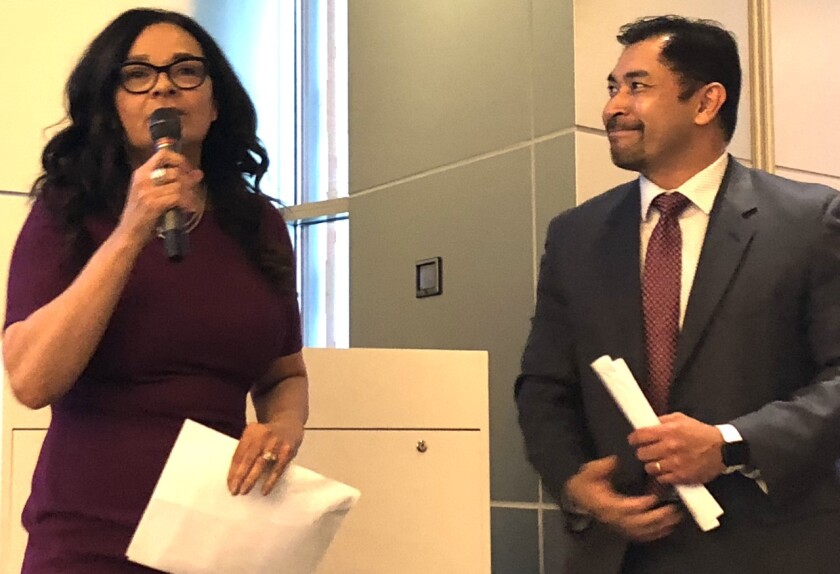
At the California Department of Technology (CDT) Vendor Event, Chief Information Officer Amy Tong and many of her executive team, including Chief Technology Innovation Officer Scott Gregory, Acting Chief Information Security Officer Vitaliy Panych and others, talked about rollouts, process changes and ideas in the works and answered questions from attendees. Among the takeaways:
• The state plans to roll out its cloud playbook in minimum viable product (MVP) form by the end of November, Ben Word, CDT chief enterprise architect, told vendors. It’s founded on the ServiceNow platform as a collaborative website where departments can use existing accounts and IDs in a “seamless single sign-on” to share stories of their own experiences adopting cloud. It will be imperative, Word said, to have vendors assist the state in this process. He said that among the issues is increasing the availability of contracts and making it easier for departments “to leverage your services, either as professional services or for implementation as well.”
“The real value is going to be the contributions from the community,” Word told Techwire afterward, indicating that the website should be more complete in two to three months. The website, he said, may be released to the public in the future, provided that doesn’t conflict with an ongoing effort to consolidate information available to the public.
• CDT, the Department of General Services (DGS) and the California Department of Forestry and Fire Protection (Cal Fire) continue to work with vendors selected through Gov. Gavin Newsom’s new RFI2 streamlined IT procurement program, in a process that likely won’t be complete until spring. In response to a question, Tong said Cal Fire continues to work with Technosylva and Northrop Grumman, vendors selected in September, on proofs of concept, a phase that should last through sometime in March.
“The intent of the administration having DGS working with Department of Technology is to continue to evolve in our ways of procurement,” Tong said, indicating the idea is to work closely with the vendor community on problem solving, “utilizing the spirit of” Public Contract Code 6611. The code allows negotiation with vendors.
DGS Director Daniel C. Kim said RFI2 is yielding a great collaboration, but is a “very labor-intensive process,” particularly for the department requesting a solution. It also may not be the best process for certain procurements, he said.
“We have to really distinguish, where does it make sense for us to just buy something off the shelf versus something like RFI2? We don’t want to just go towards RFI2 as the default because that’s the latest sexy thing. It really should be used for particular circumstances and situations," he said.
• The state is planning a new contract solicitation for license plate readers in 2020, said Marlon Paulo, CDT deputy director of statewide technology procurement. In an effort that should level the playing field, officials are working on standardizing solicitation standards for all contracts, “to ensure vendors have greater opportunity to become successful,” he said. In mid- to late-2020 due to having other ongoing projects and facing resource constraints, DGS will update the general 401 IT form, pertaining to General Provisions — Information Technology.
“It’s going to be a collaborative effort,” Paulo said. The state’s current 401 IT form was revised Sept. 5, 2014.
• Recognizing that state technology projects are becoming more iterative, agile and modular, officials are developing a new report, the annual project update, Andrea Spears, CDT state chief project officer for the office of statewide project delivery, said. The new report won’t replace the special project report, which agencies must complete when they make a major change or variance to a project. Rather, it’s targeting projects being done in newer ways.
“With the change in the way departments are operating and the way we’re all operating today we thought we’d give departments a different sort of method to sort of change their plan. If your project is iterative, if it is agile, we want that department to be able to report out to us,” Spears said. What this will do, she said, is to improve visibility into technology projects.







